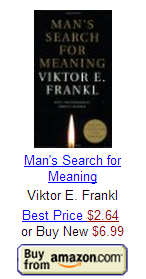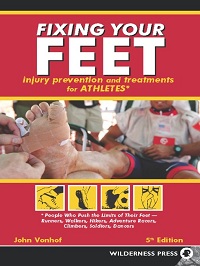 In the last two days I read “Man’s Search for Meaning” by Viktor E. Frankl — an Aushchwitz survivor. It’s only about 160 pages long, but it’s the single most important book that everyone should read.
In the last two days I read “Man’s Search for Meaning” by Viktor E. Frankl — an Aushchwitz survivor. It’s only about 160 pages long, but it’s the single most important book that everyone should read.
Frankl wrote this book a year after being released from Auschwitz, the Nazi concentration camp during World War II. The first half of the book recounts his experiences while in camp. Frankl doesn’t do this to display the atrocities of the camps, but to to support his method of psychotherapy called Logotherapy, a technique that essentially results in the patient/person taking control of their situation as opposed to being told how they feel (like in Freudian or Adlerian psychoanalysis). The second half is an essay explaining the utility of Logotherapy, but is actually “the life lesson” section.
I suggest reading the 2006 version as it includes an additional forward and afterword to go along with Frankl’s preface and postscript (which he wrote decades after the original book). On the second page of Harold S. Kushner’s forward is a summary of one of the most poignant concepts of the book:
“Forces beyond your control can take away everything you possess except one thing, your freedom to choose how you will respond to the situation. You cannot control what happens to you in life, but you can always control what you will feel and do about what happens to you.”
–pg X
The other important concept is helping people discover the meaning of their life; Logotherapy essentially puts meaning to people’s suffering. While Frankl had developed Logotherapy in theory and practice before the war, Auschwitz helped him learn the final method of discovering the meaning of life.
“According to logotherapy, we can discover this meaning in life in three different ways: 1) by creating work or doing a deed; 2) by experiencing something or encountering someone (love of experience or a person); 3) by the attitude we take toward unavoidable suffering.”
–pg 111
The parenthesis are mine (he explains each point detail in the pages after). People who are void of these things are in an “existential vacuum”, a term essentially meaning they lack meaning in their present life.
One of the biggest lessons from Frankl is that the meaning of life is relative to the time and situation you’re in. It changes! That concept never occurred to me as Western, or maybe even American, society is always pushed towards having a singular purpose. In Auschwitz, Frankl survived at different times by thinking of his wife or feeling the need to re-write his Logotherapy manuscript after the war. Later in life he did not suffer and his continued work on Logotherapy became his meaning.
What a person is experiencing will dictate what they consider their “meaning”, but it’s up to them to restructure their thoughts to provide meaning to that situation. Logotherapy is like Gandalf: it just gives them a push in the direction of figuring it out on their own.
And so Frankl provides purpose to people. Many argue that man is just a function of their heredity, biology, and environment (Frankl even points this out about Freud, who Frankl interacted with and learned from before the war, and says something along the lines of, “Thank God Freud didn’t see the concentration camps from the inside!”). Logotherapy reminds me a bit of Cognitive Behavioral Therapy (CBT) in that it creates healing through re-structuring a person’s mindset. But while CBT is systematic with a possibly dogmatic approach, Logotherapy merely gives a man perspective…the kind that says, “This is up to you.”
“Man is not fully conditioned and determined but rather determines himself whether he gives in to conditions or stands up to them. In other words, man is ultimately self-determining. Man does not simply exist but always decides what his existence will be, what he will become in the next moment.”
–pg 131
In a society where personal responsibility seems to ebb away daily, Frankl states that man inherently has responsibility for his actions. The world may not be black and white, good and evil, yet man can make a decision on how black or white his next act will be. Man has the ability to provide meaning to his existential vacuum through work, love, or courage. And when a man lacks the gumption to define that for himself, Logotherapy is there to give him a nudge in the right direction.
Read this book. It may be the difference between plodding aimlessly through life as a neurotic or embracing purpose, a meaning.
I give this book a 10/10 rating.


